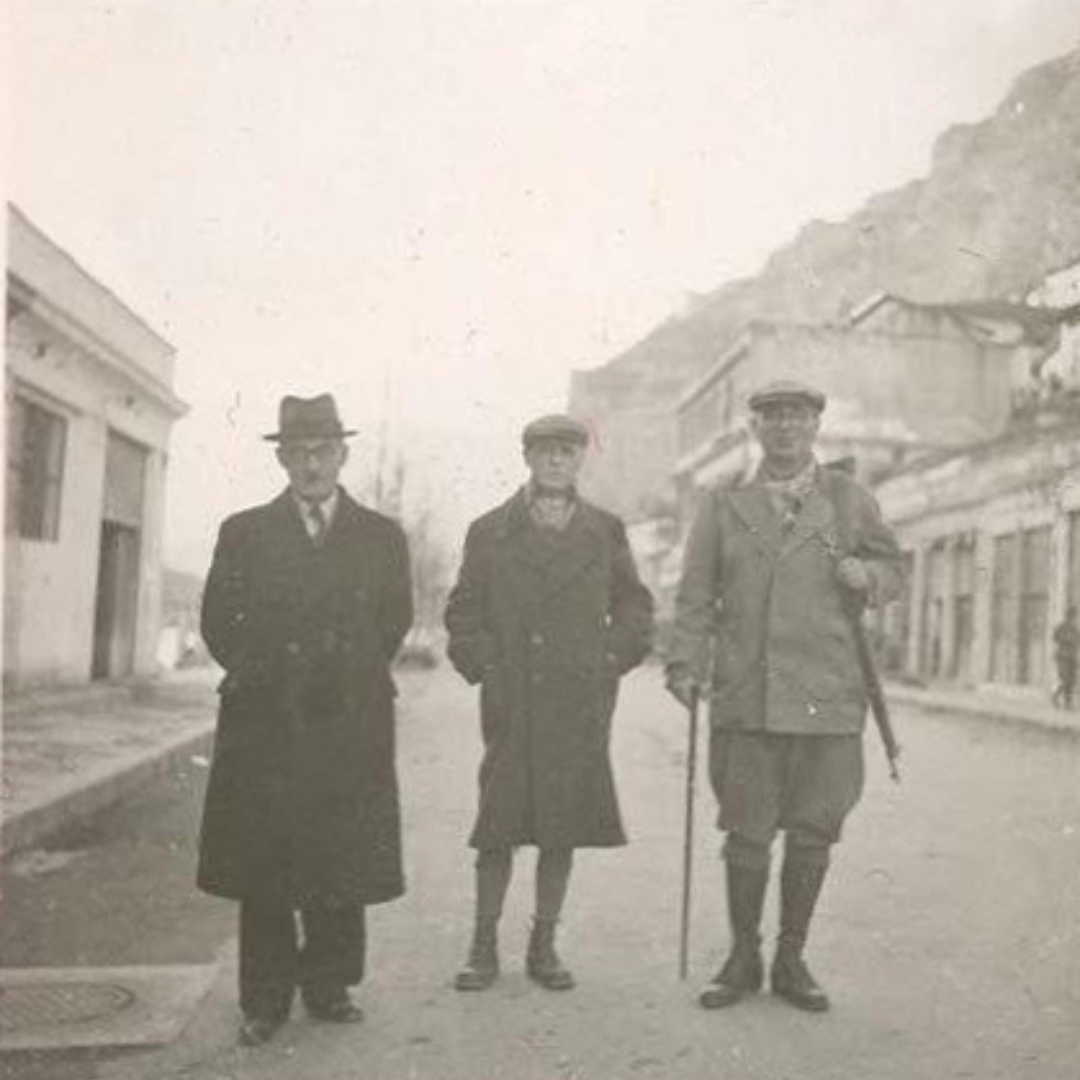Complexities of resistance in Southeastern Europe during the Second World War

Published by: Brill

In December 2004, the Serbian parliament voted for a bill on amendments and supplements on the rights of veterans, disabled military persons and members of their families. This indigestible bureaucratic formulation was, in fact, an attempt to rehabilitate the Chetniks, one of the two anti-fascist movements in the Second World War. Eleven years later, the High Court in Belgrade acquitted the Chetnik leader Dragoljub “Draža” Mihailovic, who had been sentenced and executed in 1946 for, among other things, his collaboration with the occupying forces, thus further cementing his status as a leader of an anti-Axis movement. A cursory glance at similar efforts in the region shows how state institutions and “opinion leaders” (among whom are some sympathetic historians) had sought to refashion and revise the history of the Second World War for it to serve the political needs of today.
With this surge of historical revisionism, books like Anti-Axis Resistance in Southeastern Europe are much needed for clarity. Edited by three scholars with considerable experience in the military history of the region, Anti-Axis Resistance gathers a diverse group of authors to examine various forms of armed and unarmed resistance against Nazi Germany and its allies. The book consists of eighteen chapters (including two introductory chapters and a postface) divided into three parts: “Conditions and Circumstances of the Armed Resistance,” “Resistance Movements,” and “Unarmed Resistance.” In the excellent introductory chapters, Olivier Wiewiorka and the editors provide useful reminders about the different natures of the resistance in Western Europe and in Southeastern Europe. Putting the resistance in Southeastern Europe into a larger context, outside of the confines of national (or ethnic) histories is no small feat, and this volume largely delivers.
The first part is entirely dedicated to Yugoslavia and numerous external and internal facets of the resistance movements there. Aleksandar Životić’s chapter reveals Moscow’s little-known relationship with the resistance movements in Yugoslavia. Based on sources from the former Soviet archives, Životić claims that before Barbarossa, the Soviets had started building intelligence and military structures in Yugoslavia in anticipation of a German attack. However, the Soviets had to balance their relationship with the Yugoslav government in exile and their ideological commitment to a communist-led resistance movement (partisans). Even at the urging of the Comintern to provide assistance to the partisans, the Soviet government advised Tito to “pursue a more cautious policy towards the government in exile” (p. 64). Eventually, Životić shows, the Soviets’ “natural inclination” toward the partisans prevailed, and by 1942 the Kremlin was firmly behind Tito and his guerillas.
Putting the resistance in Southeastern Europe into a larger context, outside of the confines of national (or ethnic) histories is no small feat, and this volume largely delivers.
Blaž Torkar discusses the similar dilemma of US policy makers who, however, did not have a clear understanding of the situation in Yugoslavia. The United States relied on British reports and largely followed London’s policies in the Balkans until 1943, when the first liaisons were sent to both the partisans and the Chetniks (p. 73). Unlike the Soviets, who ultimately decided to back the partisans for ideological reasons, the US based its support to the partisans on realistic military considerations, leaving political and ideological issues for later. Yet, the US “remained a bystander” in the Balkans because, as Torkar correctly notes, Yugoslavia was peripheral in overall US strategy. Although Torkar discusses British policies, one may wonder why the editors did not solicit a chapter on the British role in the Balkans, having in mind London’s crucial role during the Second World War.
Other chapters in this Yugo-centric part deal with domestic issues, notably the attitudes of the collaborationist Serbian State Guard toward the Chetniks; the ethnic structure of the partisan losses from the so-called Independent State of Croatia; and, finally, the participation of Russian émigrés in the resistance movement.
Part II on resistance movements expands its attention to liberation struggles in Albania, Bulgaria, and Greece, with unavoidable glances at the Yugoslav areas of operations. Gaj Trifković and Marenglen Kasmi offer comprehensive yet abbreviated histories of the Yugoslav and Albanian partisans respectively. Trifković’s chapter condenses his 2021 pathbreaking book Sea of Blood, a thorough military history of the National Liberation Movement. He traces the evolution of the partisans from a ragtag guerilla group to an organized army. This transformation followed the logic of the national liberation struggle and social revolution happening simultaneously. Initially, the Germans “obstinately tried to submit reality to their own way of thinking, experience, and preconceptions,” unsuccessfully attempting to eliminate the partisans in a decisive battle (p. 158). Only when they adopted more flexible tactics (free hunt, Bandit Hunter Squads) after 1943 could they fight the partisans with more success, but these changes “came too late in order to have a major impact” (p. 159).
The Yugoslav and the Albanian fronts shared some similarities but also some notable differences. As in Yugoslavia in the initial stage of the war, nationalist forces and the Communist Party of Albania (PKSh) acted together through the National Liberation Front founded in 1942 in Peza. The PKSh dominated this organization from the beginning, which led the nationalist Balli Kombëtar to distance itself from the National Liberation Front by the end of the same year (p. 195). Similar to the Chetniks, Balli Kombëtar avoided confrontation with the occupying forces, saving its strength for the fight with the communists. In late 1943, Balli Kombëtar and the PKSh engaged in a full-scale war after the failed reconciliation attempt at the Mukje conference. Like the Chetniks, Balli Kombëtar resorted to collaboration with the Germans, thus losing their credibility both domestically and with the Allies.
Post-1945 regimes always preferred the epic of the heroic armed struggle and acts of unarmed, passive resistance did not have space in these grand narratives of liberation struggle.
Many of the findings in the first two parts of the book are already familiar to those who are interested in the military history of the Balkans in the Second World War. However, Part III of this volume offers the most original contribution to the scholarship of this period of Southeastern European history. Four chapters on “Unarmed Resistance” expand the notion of resistance by discussing various forms of non-violent resistance, including a rescue operation to save Romanian Jews (“Tiyul”); the passivity of the Serbian middle class in their interactions with the occupying forces and the collaborationist government; acts of disobedience aimed at the Ustasha government and petitioning as a form of non-violent resistance; and, finally, the engagement of Romanian evangelicals in similar forms of resistance against the Antonescu government (petitions and propaganda). The main value of these chapters lies in their different focus. Post-1945 regimes always preferred the epic of the heroic armed struggle and acts of unarmed, passive resistance did not have space in these grand narratives of liberation struggle. There are some problematic statements that weaken the overall quality of these chapters, however. For example, Natasa Milićević uncritically adopts one of the main (debunked) revisionist tenets about two anti-fascist movements in Serbia. However, these shortcomings notwithstanding, these chapters provide a helpful counterbalance to the rest of the book, but also invite further research and thinking about the forms of resistance in Southeastern Europe – the region that takes great pride (or is recognized for) in its warrior traditions.
This and some other shortcomings of the volume need to be addressed. Although the volume offers invaluable regional perspectives, its Yugo-centric approach is obvious. Two thirds of the topic chapters deal with Yugoslavia or parts of Yugoslav territory. It is widely known that the Yugoslav partisan struggle was one of the largest resistance movements in Europe. However, because of its Yugoslav overrepresentation some points made in the volume seem repetitive and redundant. Moreover, the grand narratives of resistance, relying on insurgency traditions and myths, mostly exclude women. Even revolutionary movements that sought to transform societal relations had to compromise with patriarchal traditions, as Jelena Batinić convincingly showed in her 2015 book Women and Yugoslav Partisans. Yet, forms of female resistance and their role are scarcely mentioned in this book (for example, Yeomans’ story about the Housewives’ revolt in the Independent State of Croatia).
This criticism aside, this volume has much to offer to scholars of the Second World War in the Balkans. As Olivier Wieviorka writes in his introductory chapter, “the resistance […] has been plural, which invites us to think both on its goals and on the means deployed to achieve them” (p. 10). This volume certainly extends that invitation to think about the diverse forms and means of resistance that existed in Southeastern Europe. As such, it is an invaluable resource for historians, history teachers, and wider audiences interested in this region during the Second World War.
Milorad Lazić is an assistant professor at Bard HS Early College DC. He received his PhD in history from George Washington University. In 2022 he published Unmaking Détente: Yugoslavia, the United States, and the Global Cold War, 1968–1980 (Lexington Books). His book examines the global history of the Cold War in the 1970s through the perspective of Yugoslavia’s activism in the Global South and its relations with the superpowers. Milorad’s current research focuses on Yugoslavia’s humanitarian and military aid to African liberation movements.
